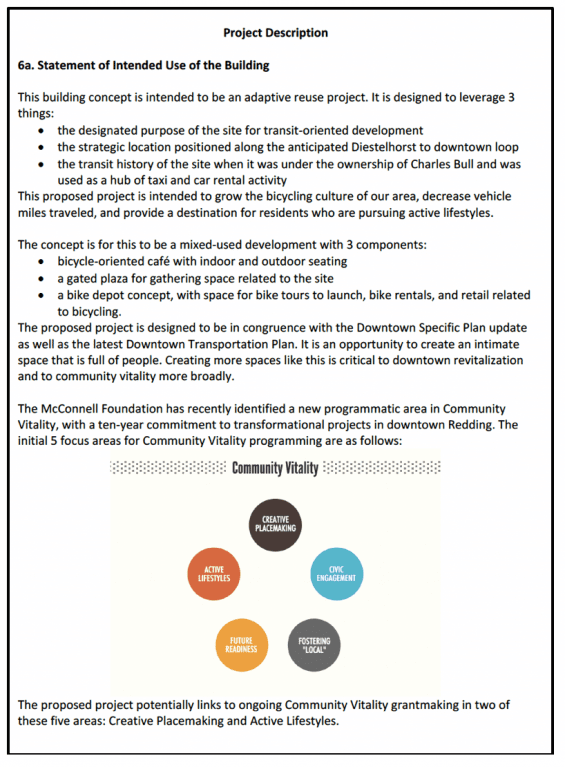Adaptive Reuse vs. Historic Preservation – What is the Difference?
On September 29, 2017, The McConnell Foundation submitted a proposal for an adaptive reuse project at the corner of California & Shasta streets in downtown Redding. Here is an excerpt from the 2017 application:
How is an adaptive reuse project different from an historic preservation project?
An adaptive reuse project intends to take an old building or site, and reuse it for new purposes. Emphasizing retrofits, adaptive reuse projects “uncover the hidden value in America’s existing building stock.” (Source: American Institute of Architects).
By contrast, historic preservation projects “sustain the existing form, integrity, and materials of an historic property…New exterior additions are not within the scope of this treatment; however, the limited and sensitive upgrading of mechanical, electrical, and plumbing systems and other code-required work to make properties functional is appropriate within a preservation project.” (Source: Technical Preservation Services of the American Park Service).
Click here for a guide by the National Trust for Historic Preservation approaches Supporting Adaptive Reuse of Historic Buildings, as way of saving the past and enriching the future.
Whereas the Bell Plaza project is an adaptive reuse project, The McConnell Foundation is exploring an historic restoration approach to the IOOF Hall; the oldest existing brick structure in downtown Redding. For more on that project, click here. Ultimately, it is clear a thriving downtown needs architectural diversity–new construction, historic preservation and adaptive reuse.



